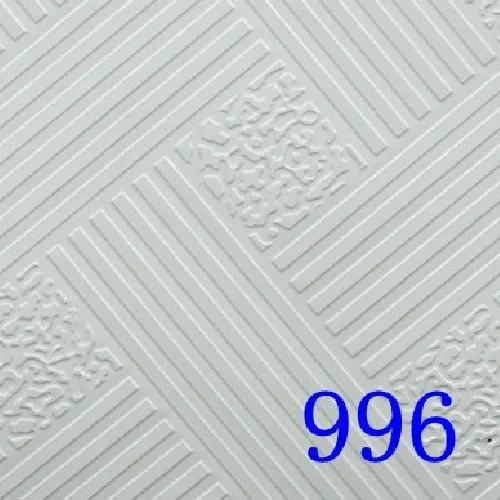10 月 . 30, 2024 15:51 Back to list
mineral fiber ceiling board specification
Understanding Mineral Fiber Ceiling Board Specifications
Mineral fiber ceiling boards are widely used in commercial and residential buildings due to their acoustic properties, fire resistance, and aesthetic appeal. These ceiling boards, made from various natural and synthetic minerals, provide functional benefits that enhance the overall quality of indoor spaces. Understanding their specifications is essential for architects, builders, and interior designers to ensure the right product is selected for specific applications.
When evaluating mineral fiber ceiling boards, several key specifications come into play thickness, density, edge design, acoustical performance, fire ratings, and moisture resistance.
Thickness and Density The thickness of mineral fiber ceiling boards typically ranges from 0.5 inches to 2 inches. The density of these boards can vary, with denser products often offering improved sound absorption and durability. A denser board, for instance, may weigh around 1.0 to 2.0 pounds per square foot, providing a sturdy option for high-traffic areas.
Edge Design The edge design of ceiling boards is critical for achieving seamless installation and a polished appearance. Common edge types include square, beveled, and tegular edges. Tegular edge boards, which drop slightly below the grid system, create an elegant shadow line, enhancing the aesthetic appeal of the ceiling.
mineral fiber ceiling board specification

Acoustical Performance One of the primary reasons for using mineral fiber ceiling boards is their excellent sound absorption capabilities. The Noise Reduction Coefficient (NRC) is a vital specification that indicates how much sound a material can absorb. A higher NRC rating, typically ranging from 0.60 to 0.95 for mineral fiber boards, suggests superior acoustical performance, making them ideal for spaces where noise control is essential, such as offices, schools, and healthcare facilities.
Fire Ratings Safety is paramount in building design, and fire ratings are a crucial aspect of mineral fiber ceiling board specifications. Most mineral fiber boards achieve a Class A fire rating, indicating they have passed rigorous testing for flame spread and smoke development. This rating is essential for compliance with building codes and ensures the safety of occupants.
Moisture Resistance In areas with high humidity or moisture exposure, such as kitchens or bathrooms, moisture-resistant mineral fiber ceiling boards are recommended. These products are treated to resist sagging and mold growth, maintaining their structural integrity and appearance over time.
Environmental Considerations Modern mineral fiber ceiling boards are often made from recycled materials, making them an environmentally friendly choice. Additionally, they can contribute to LEED certification for sustainable building practices, as many products are designed to reduce waste and energy consumption.
In conclusion, selecting the right mineral fiber ceiling board involves understanding various specifications that impact performance, aesthetics, and safety. By considering factors such as thickness, density, edge design, acoustical performance, fire ratings, and moisture resistance, architects and builders can make informed decisions that enhance the functionality and beauty of indoor spaces. With the right specification, mineral fiber ceiling boards can provide a long-term, efficient solution for a wide range of applications.
-
Revolutionizing Interior Design with Ceilings t grid Suspended SystemNewsOct.29,2024
-
Revolutionizing Ceiling Design with ceiling access panel with Gypsum Tile WaterproofNewsOct.29,2024
-
Revolutionizing Interior Design with PVC Gypsum Ceiling: A Comprehensive GuideNewsOct.29,2024
-
Elevating Interior Design with High quality Mineral Fiber Ceiling TilesNewsOct.29,2024
-
Revolutionizing Interior Design with PVC Gypsum Ceiling: A Comprehensive GuideNewsOct.29,2024
-
Elevating Interior Design with High-Quality Mineral Fiber Ceiling Tiles: A Comprehensive GuideNewsOct.29,2024







